
What is ADAS? Advanced Driver Assistance Systems Explained with IC Applications
Global electronic component supplier ERSAELECTRONICS: Rich inventory for one-stop shopping. Inquire easily, and receive fast, customized solutions and quotes.

What is ADAS?
ADAS, or Advanced Driver Assistance Systems, refers to a collection of electronic technologies integrated into modern vehicles to enhance driving safety, reduce human error, and assist the driver in both routine and emergency scenarios. These systems use a combination of sensors, embedded processors, and software algorithms to monitor the surrounding environment and support real-time decision-making.
Unlike fully autonomous driving systems, ADAS does not replace the driver but works alongside them. It acts as an intelligent co-pilot—detecting, interpreting, and responding to driving conditions faster than a human could. From issuing warnings to applying corrective actions like steering or braking, ADAS helps improve road safety, reduce accidents, and pave the way toward semi- and fully-autonomous vehicles.
Today, ADAS features are widely adopted across vehicle classes—from entry-level passenger cars to premium models—due in part to increasing government regulations and consumer demand for enhanced safety. Common ADAS functionalities include forward collision warning (FCW), automatic emergency braking (AEB), lane departure warning (LDW), blind spot monitoring, and adaptive cruise control (ACC), among others.
Common ADAS Features
Advanced Driver Assistance Systems (ADAS) comprise a range of features designed to enhance vehicle safety by continuously monitoring driving conditions, detecting potential hazards, and either alerting the driver or intervening directly. Each feature is powered by a unique combination of sensors, processors, and control units, making use of cutting-edge IC technologies.
Here are some of the most widely implemented ADAS features:
| Feature | Function |
|---|---|
| FCW (Forward Collision Warning) | Uses radar or camera sensors to detect vehicles or obstacles ahead and alert the driver of an imminent collision. |
| AEB (Automatic Emergency Braking) | Automatically applies brakes if a collision is imminent and the driver doesn’t react in time. Often integrated with FCW. |
| LKA (Lane Keep Assist) | Monitors lane markings and gently steers the vehicle to keep it within its lane. |
| ACC (Adaptive Cruise Control) | Maintains a set speed while adjusting based on the distance to the vehicle ahead. Uses radar or camera for real-time feedback. |
| BSD (Blind Spot Detection) | Detects vehicles in adjacent lanes, especially in areas not visible in side mirrors. Triggers visual or auditory alerts. |
| DMS (Driver Monitoring System) | Uses infrared cameras or other sensors to monitor the driver's eyes, head movement, or facial expressions to detect drowsiness or distraction. |

Each of these features requires a combination of automotive-grade ICs, such as CMOS image sensors, radar transceivers, FPD-Link or GMSL serializers, microcontrollers, and power management ICs to function reliably under demanding automotive conditions.
🔗 See recommended IC chips for FCW, AEB, and DMS systems →
Key Components in an ADAS Architecture
🔍 1. Sensors (Camera, Radar, Lidar, Ultrasonic)
Sensors are the eyes and ears of ADAS.
-
Cameras capture visual data for features like lane detection, traffic sign recognition, and object classification.
-
Radar offers reliable object detection in poor weather and long-distance scenarios.
-
Lidar provides 3D depth perception, useful in high-resolution mapping and obstacle avoidance.
-
Ultrasonic sensors are ideal for close-range detection, such as in parking assist systems.
These sensors interface directly with CMOS image sensors, radar transceivers, and TOF-based ICs.
🔍 2. Image Processing Unit (ISP or SoC)
Raw sensor data must be processed in real time to extract meaningful insights.
This task is handled by ISPs (Image Signal Processors) or automotive-grade SoCs that run advanced machine vision algorithms, such as edge detection, object recognition, and lane tracking.
Typical ICs in this category include:
-
TI Jacinto™ TDA4VM SoC
-
NXP S32V234
-
Renesas R-Car V4H
🔗 Explore automotive SoCs for ADAS processing →
🔍 3. Vehicle ECU (Electronic Control Unit)
The ECU acts as the brain of the ADAS system, receiving inputs from sensors and processors and triggering outputs such as braking, acceleration, or steering correction.
These units typically incorporate:
-
Functional safety-rated microcontrollers (MCUs)
-
Hardware security modules (HSMs)
-
Real-time CAN/LIN controllers
🔗 View AEC-Q100 MCUs for ADAS ECUs →
🔍 4. Power Management ICs (PMICs)
Reliability starts with power. ADAS modules operate across wide voltage ranges and require clean, regulated power rails.
Automotive PMICs provide:
-
Low dropout regulators (LDOs)
-
Battery monitoring
-
Undervoltage/overvoltage protection
Common parts include:
-
TI TPS7B6950-Q1
-
ST L5963
-
Onsemi NCV8755
🔗 See PMICs for automotive vision and radar modules →
🔍 5. Communication Interfaces (CAN, Ethernet, GMSL, FPD-Link)
Efficient and robust communication is essential for ADAS.
-
CAN/LIN is used for ECU-to-ECU messaging.
-
Automotive Ethernet (100/1000BASE-T1) is growing in radar and LiDAR applications.
-
SerDes like GMSL2 or FPD-Link III are used to transmit high-bandwidth video over long distances from sensors to processors.
🔗 Browse serializers & transceivers for ADAS connectivity →
-
Sensor input → SoC → ECU → Actuator output
-
Power & communication layers alongside

Main Types of ICs Used in ADAS
Modern ADAS platforms rely on a diverse range of integrated circuits (ICs) to sense, process, communicate, and control vehicle functions in real time. These ICs must meet stringent automotive standards such as AEC-Q100 qualification and operate reliably under extended temperature, voltage, and EMI conditions.
Below are the primary IC categories that form the backbone of ADAS hardware:
| IC Category | Function | Example ICs |
|---|---|---|
| Image Sensors | Capture real-time road visuals for object, lane, and sign detection | Onsemi AR0233, Sony IMX490 |
| Video Serializer / Deserializer (SerDes) | Transmit high-resolution video over coaxial or MIPI links from cameras to processors | TI DS90UB933-Q1, MAX96705 |
| Automotive SoC / ISP | Run computer vision algorithms and deep learning models for scene interpretation | TI TDA4VM, NXP S32V234 |
| Radar Transceivers | Emit and receive 77GHz signals to detect object range, speed, and direction | TI AWR2944, Infineon BGT60TR13C |
| Power Management ICs (PMICs) | Deliver stable voltage rails and supervisory functions to ADAS subsystems | TI TPS7B6933-Q1, ST L5963 |
| Interface ICs | Enable in-vehicle networking via CAN, Ethernet, and SerDes protocols | NXP TJA1102, TI DP83TG720-Q1 |
Each of these components plays a critical role in ensuring the performance and safety of ADAS systems. For instance, image sensors provide raw data for vision-based features like lane detection and pedestrian monitoring, while SerDes ICs ensure lossless video transmission across long distances inside the vehicle chassis.

🔗 Browse IC solutions by category: camera sensors, radar chips, power ICs, and more →
Top IC Manufacturers for ADAS
As ADAS becomes increasingly complex and safety-critical, the choice of reliable, automotive-grade IC suppliers has never been more important. Leading semiconductor manufacturers offer specialized product portfolios tailored to support the sensing, processing, communication, and power needs of ADAS systems.
Here are six of the top IC manufacturers driving innovation in the ADAS space:
🏁 Texas Instruments (TI)
TI offers one of the most comprehensive ADAS IC portfolios in the industry. Its FPD-Link™ serializers/deserializers, AWR mmWave radar transceivers, and Jacinto™ SoCs are widely deployed in automotive vision and radar platforms. TI also provides AEC-Q100-qualified PMICs, voltage regulators, and interface ICs for robust system integration.
🔗 Explore TI ADAS solutions →
e.g. TDA4VM SoC Series, DS90UB933-Q1 Serializer, AWR2944 Radar IC
🛠️ NXP Semiconductors
NXP focuses on scalable ADAS compute platforms with its S32V Vision Processors and S32G Vehicle Network Processors. Its TJA Series CAN transceivers and Ethernet PHYs are essential in building secure and fast in-vehicle networks, supporting everything from camera interfaces to domain controllers.
🔗 See NXP automotive processors and network ICs →
🔬 STMicroelectronics
ST is known for its high-reliability CMOS image sensors, low-power PMICs, and automotive microcontrollers used across ADAS subsystems. It also offers ASIL-ready components for use in functional safety systems like steering and braking.
🔗 Discover ST ICs for ADAS cameras and power modules →
🚗 Renesas Electronics
Renesas delivers automotive-grade SoCs such as the R-Car V Series, optimized for real-time image processing and sensor fusion. It also provides analog and mixed-signal PMICs that meet ISO 26262 standards for safety compliance.
🔗 Explore Renesas R-Car platforms and analog power ICs →
🖼️ Onsemi
Onsemi is a market leader in CMOS image sensors for ADAS cameras. Its AR-series sensors—such as the AR0233 and AR0147AT—offer high dynamic range (HDR), low-light performance, and AEC-Q100 qualification, making them ideal for front, rear, and surround-view applications.
🔗 Browse Onsemi AR-series image sensors →
🧲 Melexis
Melexis specializes in sensor ICs, including infrared temperature sensors, magnetic position sensors, and time-of-flight (ToF) chips. These components are widely used in Driver Monitoring Systems (DMS), gesture detection, and vehicle control interfaces.
🔗 See Melexis sensor ICs for interior and safety systems →
These manufacturers represent the technological foundation of most ADAS systems found in production vehicles today. Selecting the right IC partner is essential not only for performance and integration, but also for ensuring long-term automotive compliance and supply chain stability.
🧭 Compare top ADAS chips by application or series →

Recommended ADAS ICs by Function
Each subsystem within an ADAS architecture requires a unique class of ICs, optimized for specific performance, power, and functional safety requirements. Choosing the right component for each task ensures reliable operation, standards compliance (e.g. AEC-Q100, ASIL-B/D), and high-performance real-time response.
The following table highlights key ICs commonly used in core ADAS functions:
| Function | Recommended ICs | Brand |
|---|---|---|
| Front Camera | AR0233, IMX490 | Onsemi, Sony |
| Radar | AWR2944, BGT60TR13C | TI, Infineon |
| ISP / SoC | TDA4VM, S32V234 | TI, NXP |
| Serializer | DS90UB933, MAX96705 | TI, Analog Devices |
| PMIC | TPS7B6950-Q1 | TI |
🔍 IC Selection by Function
-
Front Camera Systems require high-resolution image sensors with HDR, low-light sensitivity, and automotive-grade reliability.
-
Onsemi AR0233 offers 2.3MP with LFM (LED Flicker Mitigation).
-
Sony IMX490 provides 5.4MP with extremely wide FOV and excellent night performance.
🔗 Explore all front-camera sensors →
-
-
Radar Modules depend on 77GHz transceivers that support multi-mode Doppler and angle-of-arrival computation.
-
TI AWR2944 is an integrated radar-on-chip with DSP/MCU.
-
Infineon BGT60TR13C is a compact radar IC for short-range detection.
🔗 See radar transceivers comparison →
-
-
ISPs and SoCs are critical for object detection, path planning, and neural network inference.
-
TI TDA4VM includes a vision DSP, C7x CPU, and deep learning acceleration.
-
NXP S32V234 targets image recognition with embedded GPU and ASIL-B support.
🔗 Compare automotive vision processors →
-
-
Serializers (SerDes) are used to transmit raw video from remote sensors to central processors.
-
TI DS90UB933-Q1 is part of the FPD-Link III family.
-
Analog Devices MAX96705 supports GMSL interfaces.
🔗 View all SerDes chips for ADAS →
-
-
Power Management ICs (PMICs) ensure stable voltage supply with protection and diagnostics.
-
TI TPS7B6950-Q1 offers low quiescent current and wide input voltage range for camera modules.
🔗 Browse automotive PMICs by feature →
-
Related Product Pages (Internal Linking)
For readers looking to explore specific IC components used in ADAS applications, we’ve curated several high-relevance product pages and chip collections that go deeper into specifications, datasheets, and real-world use cases.
These links serve as the bridge between ADAS system-level knowledge and real component selection, making it easier for engineers and buyers to take the next step toward implementation.
🔗 TI DS90UB933-Q1: Serializer IC for ADAS Cameras
The DS90UB933-Q1 is a FPD-Link III serializer designed for automotive vision systems. It transmits uncompressed 12-bit RAW video data from remote CMOS image sensors to a central processor over a single coaxial cable.
-
Supports 720p/60fps resolutions
-
Integrated bidirectional control channel
-
AEC-Q100 qualified
-
Ideal for front and rear-view cameras
✅ Explore full DS90UB933 series →
🔗 Onsemi AR0233: Image Sensor for Automotive Vision
The AR0233 is a 2.3MP CMOS image sensor that provides high dynamic range (HDR) performance and LED flicker mitigation (LFM), making it ideal for ADAS cameras operating in challenging lighting conditions.
-
1/2.7" optical format
-
120 dB HDR
-
AEC-Q100 Grade 2
-
Supported by leading ISP and SoC platforms
✅ See all AR-series image sensors →
🔗 Top 10 AEC-Q100 ICs for Automotive Radar Systems
Radar is a key sensing modality in ADAS, particularly for blind spot detection, collision avoidance, and adaptive cruise control. This curated page includes:
-
77GHz and 24GHz radar transceivers
-
mmWave SoCs with integrated DSPs
-
Comparison of TI, Infineon, NXP, and others
-
Radar-specific PMIC and interface ICs
✅ Compare radar ICs by frequency, range, and safety compliance →
Frequently Asked Questions (FAQ)
Understanding the architecture and components of ADAS can be complex, especially given the wide range of technologies involved. Here are answers to some of the most common questions about ADAS systems and the ICs that enable them:
❓ Q: Is ADAS the same as autonomous driving?
A: No. ADAS (Advanced Driver Assistance Systems) provides support to the driver by automating or enhancing certain tasks such as braking, steering, and lane keeping. It still requires human supervision. Autonomous driving, by contrast, refers to a system capable of driving the vehicle entirely on its own, without human input.
❓ Q: What is the most important chip in an ADAS system?
A: While every IC plays a role, the most critical components are typically image sensors and automotive SoCs. Image sensors (e.g., Onsemi AR0233, Sony IMX490) capture the raw data from the environment, while SoCs (e.g., TI TDA4VM, NXP S32V234) perform real-time image processing and decision-making.
🔗 Explore recommended image sensors and SoCs for ADAS →
❓ Q: Are ADAS chips AEC-Q100 qualified?
A: Yes. Most ADAS-related ICs—especially those used in production vehicles—are AEC-Q100 qualified, meaning they have passed rigorous automotive-grade reliability testing. Brands like TI, NXP, ST, Renesas, and Onsemi design their ADAS components specifically to meet or exceed these standards.
🔗 Learn more about AEC-Q100 certification and chip compliance →
Conclusion
Advanced Driver Assistance Systems (ADAS) are no longer limited to high-end vehicles—they are becoming standard features across both economy and luxury car models worldwide. As regulations tighten and consumer expectations rise, the demand for safe, reliable, and intelligent automotive electronics continues to grow.
For engineers, procurement teams, and system architects, understanding the core IC components that enable ADAS functionality is essential. From image sensors and radar transceivers to SoCs, PMICs, and SerDes interfaces, each chip plays a critical role in enhancing road safety and delivering an intelligent driving experience.
🔗 Explore more automotive IC solutions for ADAS, BMS, OBC, and ECU applications →
Whether you're designing a next-generation ADAS camera module or sourcing radar chipsets for an OEM vehicle platform, choosing the right ICs is the foundation for a safer and smarter automotive future.
Related Articles
- ·ICD Electronics: Tiny Lightning, Relentless Reliability
- ·Smart Pill Dispensing Electronics: From Missed Doses to Mission Control
- ·Conditional Access Module (CAM): The Pay-TV Gatekeeper Engineers Actually Enjoy Reading About
- ·NC Formula Semiconductor: The Blockbuster Guide You Didn’t Know You Needed
- ·Electrosurgery Electronics: Turning RF Into a Surgical Superpower
- ·Endoscopic Imaging Electronics: Tiny Optics, Big Picture
- ·Instrument Cluster: The Dashboard Wizard That Makes You Feel Like Iron Man
- ·X-ray & CT Electronics: From Kilovolts to Reconstruction
- ·MRI Core Electronics: From Quench to K-Space
- ·OKL Series PoL DC/DC Converters: The Bite-Size Power Bricks That Keep Your Board Cinematic


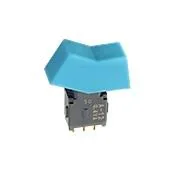
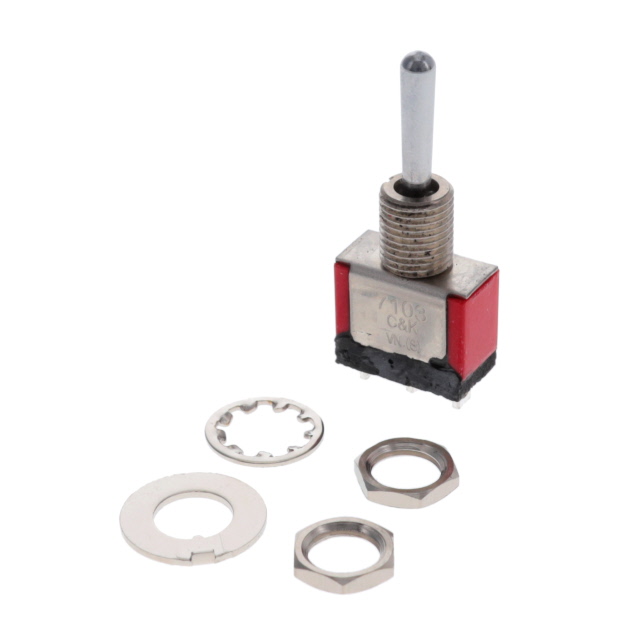

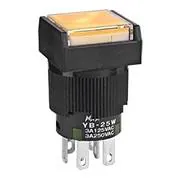
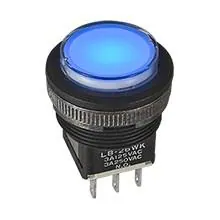

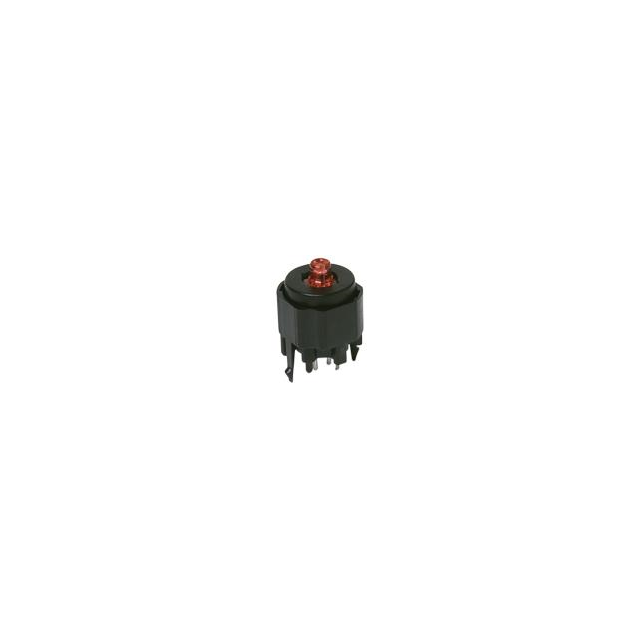

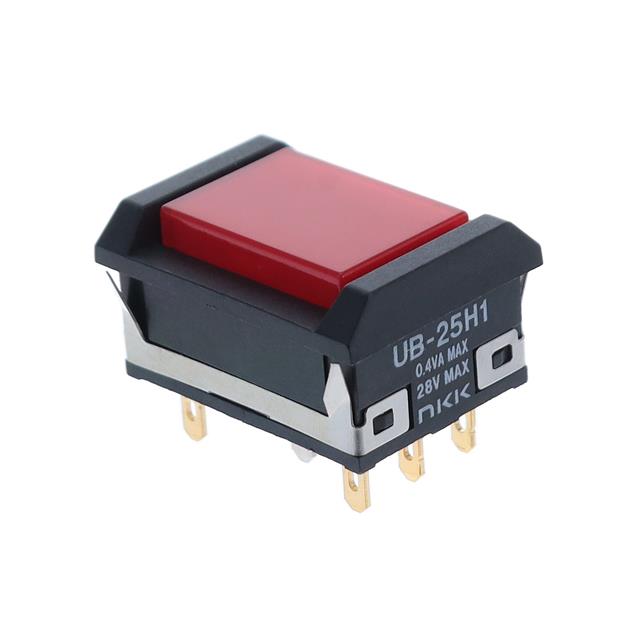
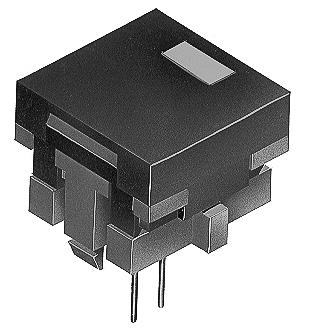






.png?x-oss-process=image/format,webp/resize,h_32)










